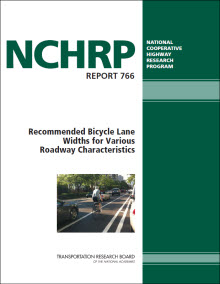 A new National Cooperative Highway Research Program report (NCHRP 766), "Recommended Bicycle Lane Widths for Various Roadway Characteristics," seeks to refine existing guidance and develop recommendations for bicycle lane widths for various roadway and traffic characteristics. The report – whose authors include John LaPlante and Nathan Roseberry of T.Y. Lin' s Chicago office – develops design guidance for bicycle lane widths for roadways in urban and suburban areas.
A new National Cooperative Highway Research Program report (NCHRP 766), "Recommended Bicycle Lane Widths for Various Roadway Characteristics," seeks to refine existing guidance and develop recommendations for bicycle lane widths for various roadway and traffic characteristics. The report – whose authors include John LaPlante and Nathan Roseberry of T.Y. Lin' s Chicago office – develops design guidance for bicycle lane widths for roadways in urban and suburban areas.
To draft recommendations, an observational field study was conducted to evaluate the allocation of roadway width on both bicyclists' and motorists' lateral positioning, taking into consideration various roadway and traffic characteristics. The methodology of the field study involved installing temporary lane line markings to delineate bicycle lanes of varying widths at midblock locations and observing the behavior of bicyclists and motorists. The final database from the observational field study included data on 4,965 bicyclists, 3,163 passing vehicles, and 994 parked vehicles. The conclusions of the study are most applicable to urban and suburban roadways with level grades and a posted speed limit of 30 miles per hour.